NBA Free Agency 2018: Top 50 Players Available

Free agency in the NBA technically begins on July 1, though preparations for this summer have been in the works for years. Teams have carefully analyzed their finances and scouted personnel throughout the league with specific goals in mind—all while knowing their best-laid plans could be detonated with a single, market-shaking deal. All it takes is one bloated Timofey Mozgov contract to rock their projections off balance.
This is why the NBA offseason—far from any court or camera—has become the greatest show in sports. Before the league’s teams ever have a chance to test one another, they’re each tested by the unpredictability of the marketplace.
To set the stage, we’ve ranked the top 50 free agents available (or potentially available, in some option cases) this summer. Considerations for the ranking include: Recent performance, expected contract value, age, developmental trajectory, variety of potential fits, versatility, chemistry with previous teammates, relationships with coaches, role in the modern NBA, and more.
Editor's note: This story was first published on June 25, before the start of NBA free agency. The Crossover staff has kept each player's pre-July 1 introduction as a reminder of the context that surrounded every signing.
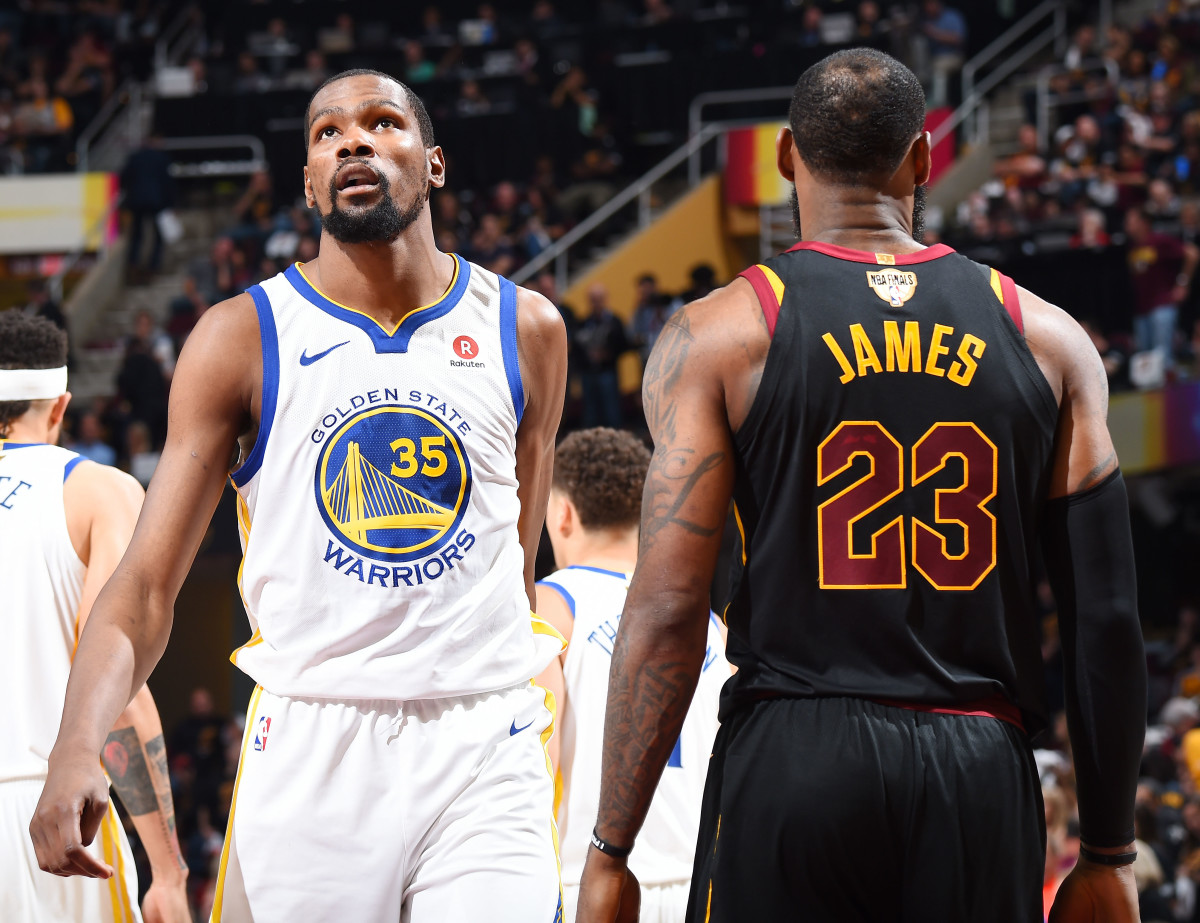
1. LeBron James (Player option)
League-wide operations this summer wait on LeBron. The teams in the running for his services are in a holding pattern, as are the other free agents who could potentially sign with those teams in his stead. Cap space is earmarked while players and picks are set aside in the event that a trade becomes the best way forward. Veterans around the league delay their own decisions on the off chance they might be able to join LeBron’s team, or score a bigger contract by one of the teams left with cap room to spare. It’s not a stretch to think that, by the end of the summer, the vast majority of the moves made and not made this summer might somehow link back to LeBron.
What Happened:LeBron will sign with Lakers on a four-year, $154 million deal always made the most sense.
2. Kevin Durant
Durant is on record as saying that he’ll be back with the Warriors next season, going as far as to confirm that there is a 100% chance of his re-signing. The only variable is preference; does Durant want a rich, long-term deal or a flexible, short-term one?
What Happened:Durant gave the Warriors a break with a two-year max deal with a player option, allowing him to re-enter free agency next season.
3. Paul George
Whichever team George signs with will get high-level play from the wing on both sides of the ball—a precious commodity in the modern NBA. Few defenders are more versatile, and few stars are better suited for working alongside other stars. Every team could use a player like George, though whether he’ll really consider any outside of Los Angeles remains to be seen.
What Happened: The Thunder lean on team and culture to sell George on Oklahoma City and a four-year, $137 million.
4. Chris Paul
Houston is a clear favorite to retain Paul this summer, though the choice will ultimately be his. If he finds a more attractive offer (a tough ask considering Paul plays alongside the likely MVP on a team that should continue to challenge the Warriors), the Rockets will be without recourse. That creates an interesting backdrop for Paul’s contract negotiations—especially at a time in his career when a team might understandably hesitate to offer the maximum salary. Paul is one of the NBA’s most effective players. He’s also a smaller 33-year-old point guard with a rather significant injury history.
What Happened: The Rockets, who were in a tough spot, added Chris Paul on a four-year, $160 million.
LeBron James, Free Agency and the Biggest NBA Offseason Questions
5. Clint Capela (Restricted)
Capela developed into exactly the kind of center the Rockets needed him to be, a fact which will ultimately cost them. Re-signing Capela—and bringing back the group that pushed the Warriors to a seventh game in the Western Conference finals—won’t come cheap considering how valuable his defense, rebounding, and finishing ability has become.
6. DeAndre Jordan
Jordan hitting free agency this summer is contingent on his declining a $24.1 million option in a tepid market. On some level, I'm sure Jordan would enjoy the security of a new, multi-year deal. In reality, there aren't that many teams with enough room under the cap to make him a lucrative offer, and even fewer that are looking for immediate help at center.
What Happened: After flirting with Dallas in 2015, Jordan agreed to a one-year deal with the Mavericks.
7. DeMarcus Cousins
One of the league's most polarizing players suffered one of basketball's most devastating injuries last season, adding further complication to his immediate future. Cousins's talent is undeniable; there aren't many answers for a player of his size and skill, which is how he averaged 25 points, 13 rebounds, and five assists without even being the best player on his own team. It's possible we never see that player ever again. Even if we do, it could take years of gradual recovery—something Cousins's next team will have to reckon with on his next contract.
What Happened: In a shocking move, Cousins joined Golden State on a one-year, $5.3 million contract.
8. Aaron Gordon (Restricted)
Gordon's athletic, open-floor game yearns for the kind of space he's been unable to find in Orlando. He owes it to himself to explore the market, even if it's highly unlikely that the Magic—after six years in the doldrums—would let their best young player walk for nothing in return.
What Happened: Choose to return to Orlando on a four-year, $84 million deal.
9. Julius Randle (Restricted)
Year Four of the Julius Randle Experience was his most galvanizing yet. Some skeptics were made into true believers by Randle's bursts of productive energy, and reassured by the deft touch of his floor game. He hasn't cracked a long-range shot or made a significant breakthrough on defense, though at just 23 years old there's time yet for both. The league's trend toward undersized centers gives Randle a real market.
What Happened: Randle joined the Pelicans on a two-year, $18 million deal.
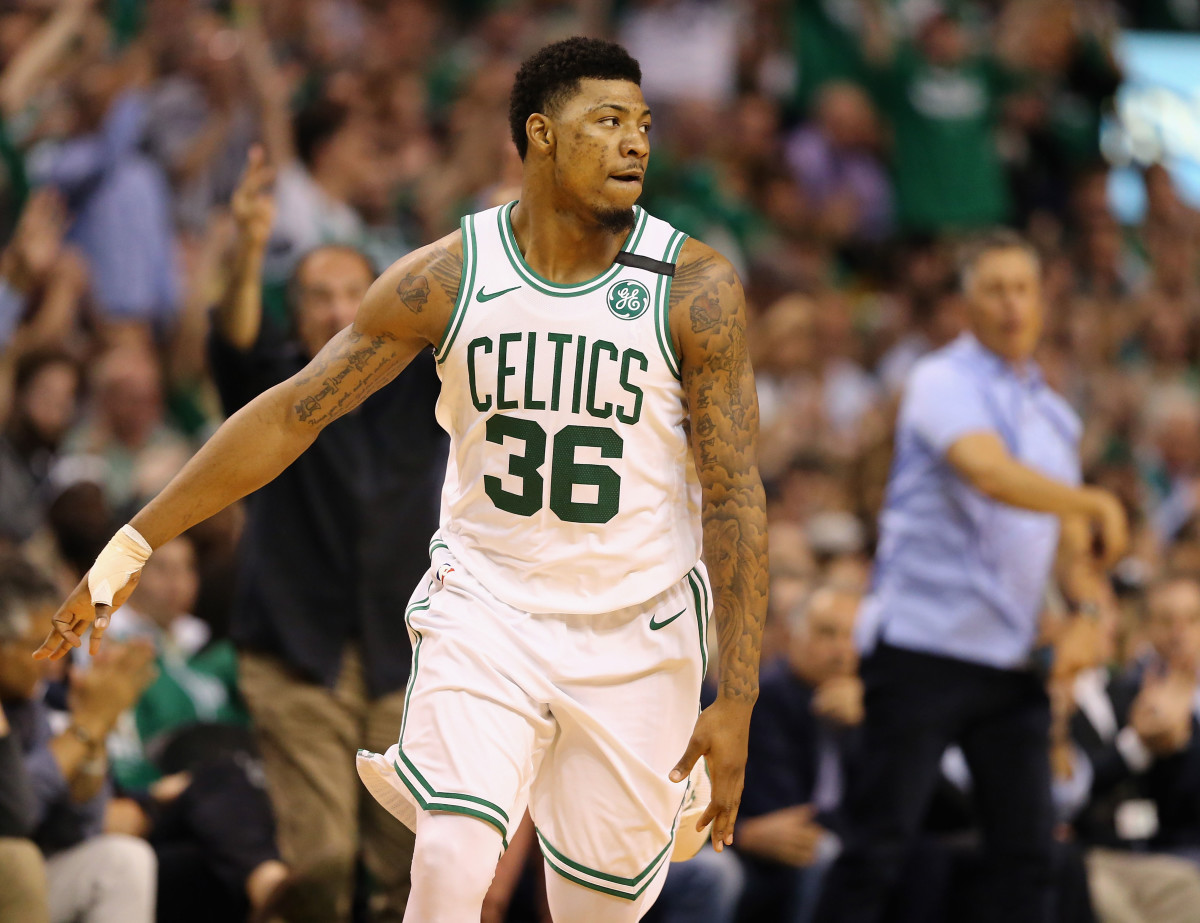
10. Marcus Smart (Restricted)
Smart is about as good as a player can be while shooting 36.7% from the field. It's hard to build around him, given that he's neither a competent scorer nor a reliable playmaker. Yet if Smart is allowed to freelance a bit within an established structure, he makes high-impact plays that few others can make. You pay for his defense, his edge, and his energy. You just have to live with the fact that no opponent will respect his jumper come playoff time.
11. Derrick Favors
One of the best centers on the market started the majority of his games last season at power forward. That flexibility is part of his appeal. If you're looking for a bigger four who can punish switches, Favors is a great option; lineups featuring both Favors and Gobert outscored opponents by 7.2 points per 100 possessions in the regular season and 10.9 points in the playoffs. If you're looking for a mobile starting center who can hold his own against guards and wings, Favors is a solid choice. He's better than the role available to him in Utah, and not yet 27 years old—even after playing eight years in the league.
What Happened: The Jazz retain Favors on two-year, $36 million deal and keep their frontcourt intact.
12. J.J. Redick
It speaks volumes that on a team with two young stars, it was Redick who most informed how Philadelphia ran its offense. The non-stop churn of dribble hand-offs made the Sixers tough to guard and resulted in the most productive scoring season of Redick's career. His most meaningful contributions don't come from standing on the weak side of the floor. They come from the kind of activity and dynamic spacing that stresses a defense to its breaking point.
What Happened: Redick returned to the 76ers on a one-year deal worth between $12 and $13 million.
13. Trevor Ariza
While James Harden and Chris Paul worked their magic in isolation, Ariza committed himself to the thankless work of winning basketball. Look for the most taxing defensive assignment on the floor and you'll find Ariza in the thick of it, chasing guards around screens and holding his own against bigs on the boards.
What Happened: In a surprise move, Ariza joined the Suns on a one-year, $15 million deal.
14. Tyreke Evans
Injuries undercut Evans in the prime of his career, but last year he returned to form as a spot creator for the Grizzlies. It's fair to wonder what role he plays is a fluid, high-functioning offense. Evans tends to hold the ball slightly longer than he should, though so long as he's scoring as efficiently as he did last season, it's hard to argue with the results.
What Happened:Evans signed a smart one-year deal with the Indiana Pacers.
15. Jusuf Nurkic (Restricted)
Given the market for centers and Portland's cap situation, a reunion between Nurkic and the Blazers makes sense—even if their 2017-18 season didn't go quite as intended. Nurkic's All-Star flashes from the season prior never quite paid off. Instead, Portland got a center who was merely solid: able to protect the rim, bully his way into scoring position, and make a few plays along the way. Nurkic is among the more gettable restricted free agents on the market, though there isn't an obvious suitor to compete with the Blazers for his services.
What Happened: Trail Blazers keep their big man in Portland with a four-year, $48 million contract.
16. Zach LaVine (Restricted)
A tantalizing scorer with a lot to prove. LaVine makes some areas of the game look easy and many others look hard. He has a long, long way to go defensively, but all the physical tools to make the leap; LaVine has the quickness to keep up, the body type to slither around screens, and the length to bother opposing ball handlers wherever they go. None of it, however, seems to come naturally. An investment in LaVine is a wager that the 23-year-old will grow into those aspects of his game—or perhaps develop on offense to the point that his deficiencies simply matter less.
What Happened: The Bulls matched the four-year, $78 million offer sheet that he signed with the Sacramento Kings.
17. Thaddeus Young
After an impressive playoff showing, Young is weighing his options. He plays a subtle game at a position of obvious need; every team needs bigs who can cover ground and handle a wide variety of defensive assignments, and Young can oblige. His defense against Kevin Love (who shot 28.4% from the field when Young was on the floor) was crucial to the Pacers' upset bid against the Cavs in the first round—a series that nearly ousted LeBron from the playoffs. Should he decline his $13.8 million player option, Young will cost the Pacers—either by demanding a new deal or leaving them without a core utility piece.
What Happened: Young exercised his $13.7 million player option and bypassed free agency.
18. Avery Bradley
Injuries nagged at Bradley throughout the 2017-18 season. Even in the 46 games he played for the Pistons and Clippers, he struggled for consistency—as would make sense for a player who would eventually undergo surgery to repair his abdominal and groin muscles. Those ailments—and their recovery—have to be priced into Bradley's next deal, but it's not as if this were some chronic issue. He should be able to hound opposing ball handlers for years yet, while contributing capably as a cutter and shooter.
What Happened: Bradley returned to the Clippers on a two-year, $25 million contract.
19. Isaiah Thomas
It's at times like these that the chip on Thomas's shoulder threatens to sink him. No matter how effective he was in Boston two years ago, Thomas's future seems to be in a smaller role—the very kind that he seems loathe to accept. Invest at your own risk. We still don't know just how fully Thomas will be able to recover from the hip injury that compromised his game last season, and his short stature leaves little room for athletic decline. If Thomas can't create separation from his defender—as was his issue last season—his days as a useful player could be over.
What Happened: Joined the Nuggets on a one-year deal for the veteran's minimum.
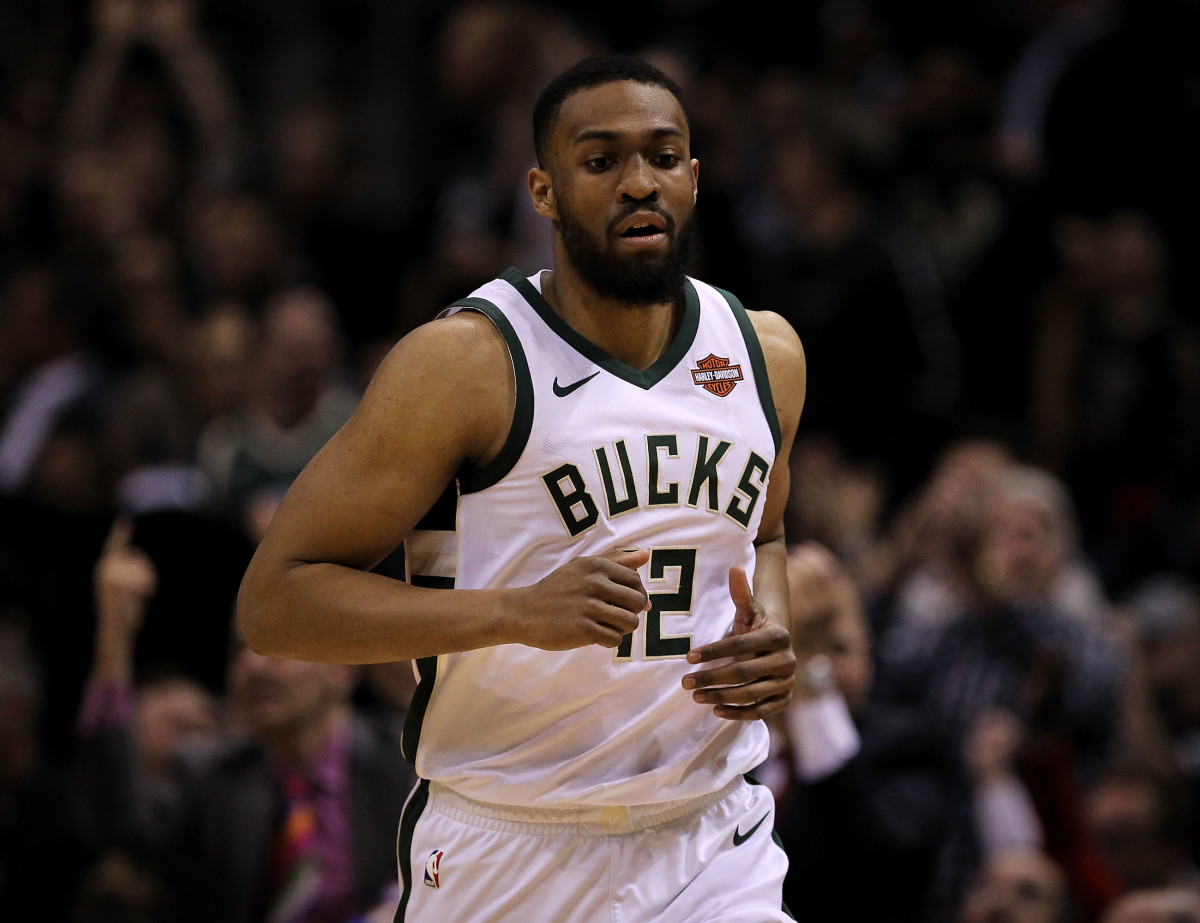
20. Jabari Parker (Restricted)
There's still a great deal of intrigue around Parker, given that his game has never much had the chance to settle. Whatever traction he found as a scorer was undermined by injury. When Parker returned, he found the Bucks an entirely different team—in large part because Giannis Antetokounmpo had become a entirely different player. Everything we've seen from Parker since has been an effort to fit in on the fly, all while working his way back into form. Those evaluating Parker for how he might perform in another context have their work cut out for them, considering all the complications involved.
21. Brook Lopez
Lopez was a transient piece for the Lakers—a stop-gap center who allowed young lineups to maintain some sense of normalcy. They had no reason to invest in him with all that many minutes or touches, but don't mistake that lack of investment for a lack of ability. Lopez is but a year removed from scoring 20 a game, and he has the ability to do so again if called upon. The question is whether a team will, given that bigs of his kind can effectively be played off the floor in the postseason.
22. Danny Green (Player option)
Green, at minimum, is one of the best wing and guard defenders in the league—and certainly one of the best to be potentially available this summer. That alone elevates his value, even if his own offense has been rather inconsistent in recent years.
What Happened: Danny Green opted into the final year of his deal and will earn roughly $10 million next season.
23. Will Barton
Barton found his calling in Denver as a sixth man, a role he embodies down to its very ethos. There is an unpredictability in his game that can carry a second unit and leave opponents flummoxed. Good teams need those sorts of chaotic elements in their offense, albeit in contained roles.
What Happened: Returned to the Nuggets on a four-year, $50 million deal.
24. Fred VanVleet
Reserve guards who can both run a steady offense and fill in alongside the stars in the starting lineup are trickier to find than one might think. VanVleet straddles those two skill sets naturally, seamlessly finding his place in the action regardless of whether he controls the ball.
What Happened: Returned to the Raptors on two-year, $18 million deal.
If LeBron James Chooses Philadelphia in Free Agency, Does That Mean The Process Is Over?
25. Luc Mbah a Moute
Mbah a Moute's offensive limitations will always leave his team wanting, but only because they'd love to have him on the floor for bigger minutes and longer stretches. Any sort of defensive assignment is safe if Mbah a Moute's hands. He's 6'8" but can check point guards, if necessary, and centers, if asked.
26. Rajon Rondo
Rondo might only make matters worse when a team is in crisis, but the way he thinks around problems can be very attractive to those on the fringes of the playoffs. Part of the reason the Pelicans were able to turn a few advantages against the Blazers into a clean sweep is that Rondo kept the team focused in its execution. To play him sacrifices spacing and defensive precision. Yet Rondo has his value to the right team in the right circumstances.
What Happened: Rondo has joined the LeBron James and the Lakers on a one-year, $9 million deal.
27. Ed Davis
An argument could be made that Davis, an outstanding offensive rebounder and active interior defender, was Portland's best center last season. The clear limits of his game are somewhat offset by the security of Davis knowing exactly who he is and what he does best.
What Happened: Davis agreed to a one-year, $4.4 million contract with the Nets.
28. Rudy Gay
Gay has reportedly declined his player option, worth $8.8 million, for next season, throwing him back on the market after signing with San Antonio last summer. In many ways, Gay showed the healthiest habits of his playing career as a Spur by passing a bit more than usual and minding his defense on more than an occasional basis. In the process, he elevated his standing from frequent punchline to nondescript contributor.
What Happened: Gay commited to a one-year, $10 million deal.
29. Wayne Ellington
Only five players in the league made more three-pointers last season than Ellington, each one of them a star scorer in his own right. That skill travels; the only magic in the way the Heat used Ellington was that they thought to feature him, leveraging his shooting in curls and dribble hand-offs to force defenses into tough decisions. A player like Ellington can elevate an offense short on high-end creators or fill a role to complement tried-and-true stars. The key is simply letting him loose.
What Happened: Returned to the Miami Heat on a one-year deal.
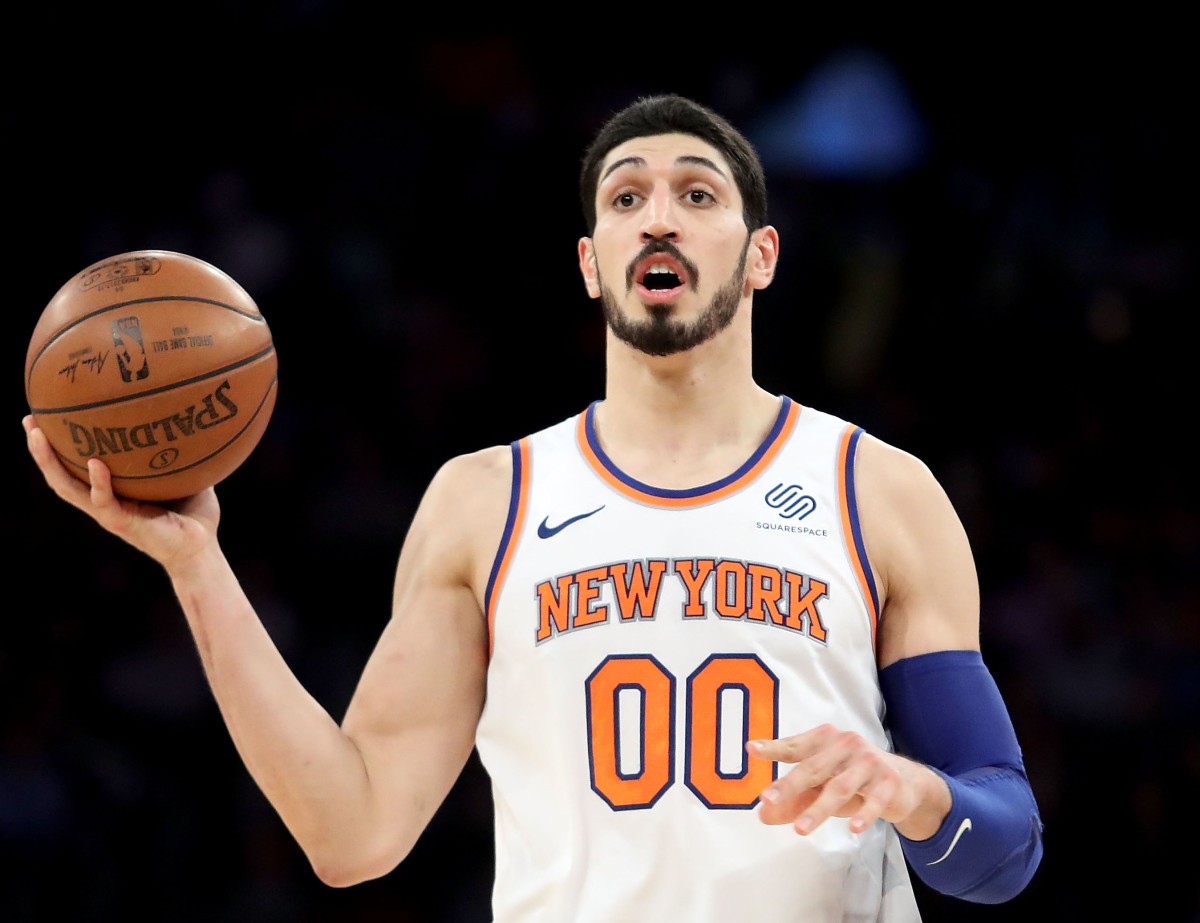
30. Enes Kanter
Kanter can be highly valuable in the right context and completely unplayable in the wrong one, making him one of the more difficult players to price. It seems unlikely, regardless, that he would be offered more money next season than his $18.6 million option. So long as New York suits him—and it really seems to—Kanter's best bet is likely to stick around for another year.
What Happened: Kanter exercised his $18.6 million option and returned to the Knicks.
31. Joe Harris
Don't be surprised when Harris—a somewhat anonymous, 26-year-old shooter from the Nets—scores a multi-year deal this summer. Brooklyn took a flier on Harris as one of its developmental projects, and in two years helped fashion him into the kind of floor-spacing role player who could really help a team.
What Happened: Harris agreed to a two-year, $16 million deal with the Nets.
32. Dirk Nowitzki (Team option)
Nowitzki's status technically warrants inclusion on this list, but he'll be a Maverick next season. Let's move along.
33. Dwyane Wade
The most promising flashes from Wade last season came as a second-unit point guard in Cleveland, where he brought order to a group of role players. If Wade can embrace that kind of mentality—one of facilitation rather than go-to scoring—he could have plenty of fun, productive basketball ahead of him. If not, his utility seems rather limited.
34. Ersan Ilyasova
Philadelphia would have run aground in the early rounds of the playoffs were it not for Ilyasova. In theory, his value lies in his shooting; Ilyasova hovers around league average from three-point range and can moonlight as a backup center, which is enough to give an offense some stretch. In reality, Ilyasova—a Hall of Fame charge-taker and prolific offensive rebounder—probably brings more with hustle.
What Happened: Ilyasova, who previously played in Milwaukee, returned to the Bucks on a three-year, $21 million deal.
Why Paul George Is the Most Important Free-Agent Domino
35. Dante Exum (Restricted)
Four years—and just 179 games—into his NBA career, Exum remains a bit of a mystery. The ship seems to have sailed on his prospects as a point guard in the traditional sense, though his length and slashing ability make him a fascinating combo guard option. Think of him as a proto Shaun Livingston with a more bashful off-the-dribble game.
What happened: Exum agreed to a three-year, $33 million deal to stay with the Jazz.
36. Elfrid Payton (Restricted)
It can be difficult to see beyond Payton's limitations at times, which doesn't speak kindly to his strengths. In signing him, one would hope that his more promising streaks over the last two seasons (his finishing in crowds, his spots of competent shooting, and his stretches of more focused defense) might hint at further development.
What Happened: Payton has taken his talents—and new hairstyle—to New Orleans.
37. Aron Baynes
Baynes is an awesome team defender and proof of concept that bruising big men still have their place in the league. If the corner three-point shooting he showed in the playoffs (where he shot 48% from deep) is in any way real, he should have more than enough staying power to help a team in a bigger role.
What Happened: Baynes and the Celtics agreed to a two-year, $11 million deal.
38. Greg Monroe
Monroe has found his niche: generating efficient offense for around 20 minutes a night against second-line bigs too small or too green to stop him. Keep his role contained and his weaknesses will rarely come to bear.
39. Seth Curry
Curry, prior to fracturing his left leg, had made good on his opportunity to fill it up for the Mavericks. Dallas was in need of dynamic guard play, particularly out of pick-and-roll situations. Curry was looking to affirm his performance with a full-time role. The arrangement turned out well for all parties involved when Curry was able to play, and could again for a new team now that Curry is back in action.
What Happened: Curry opted to join the Portland Trail Blazers.
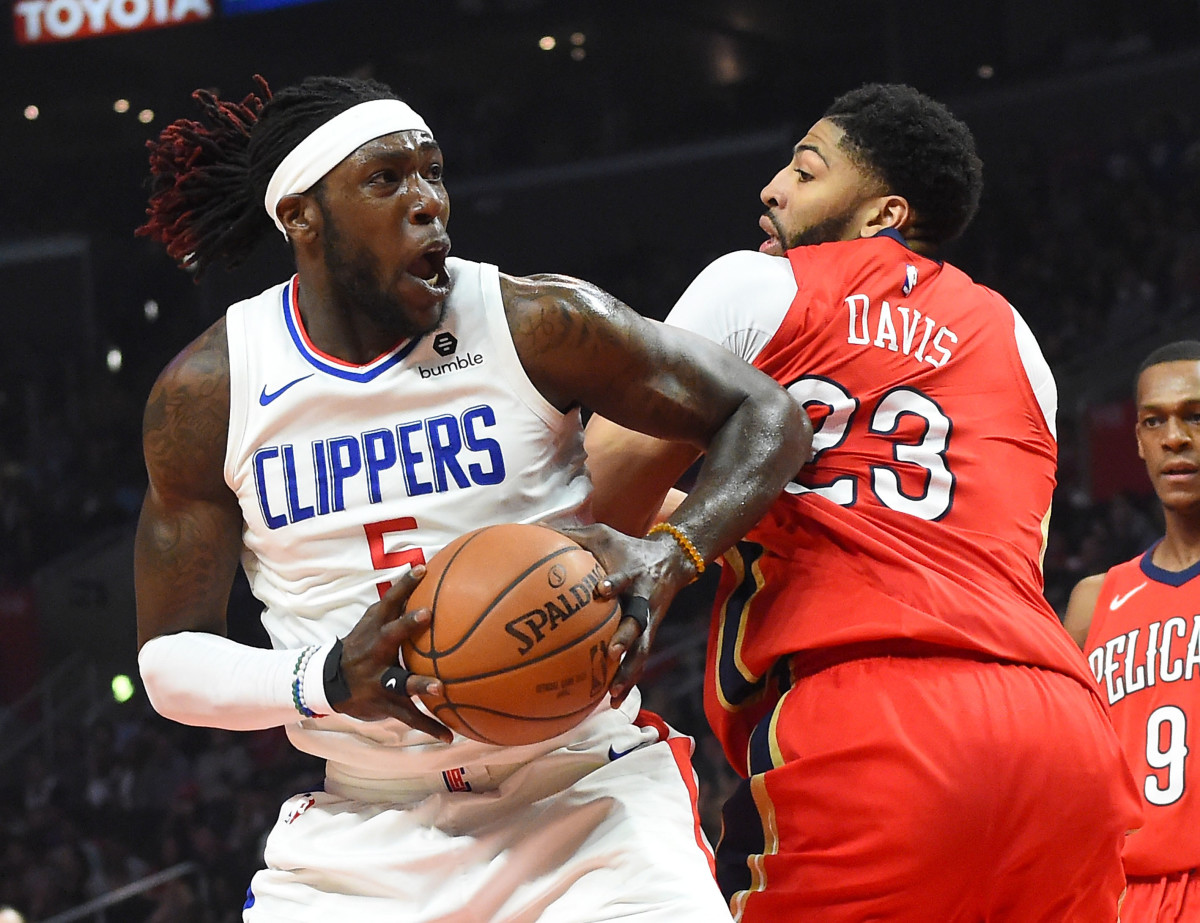
40. Montrezl Harrell
Harrell stretched his game as a Clipper last season for the simple fact that he no longer had James Harden around to spoon-feed him dunks on his rolls to the rim. He was forced to catch the ball further from the basket; to finish on hook shots rather than layups; and to create for himself. What resulted were 17 highly productive and marvelously effiicent minutes a night. Harrell doesn't have the defensive chops or the desired size to be a starter, but his downhill work can change the momentum of a game in spot minutes.
41. Nerlens Noel
This is strictly a prospective ranking, given that the highlight of Noel's season with the Mavericks came by sneaking into the American Airlines Center media room for a halftime hot dog. Noel can be an awesome player when he tiptoes the line between order and chaos. Too often, however, he veers into freelancing beyond his role and beyond the scheme he plays in.
What Happened: The Thunder acquired Noel on a one-year deal worth the veteran's minimum.
42. Rodney Hood (Restricted)
Hood likely salvaged his free agency by showing up in the Finals, but fundamentally he was still the player whom the Cavs—a team that had fully invested in his ability to create offense—effectively benched. Considering that Hood is at his best with the ball in his hands, you'd prefer that his game were a bit more stable.
43. Kentavious Caldwell-Pope
Caldwell-Pope might trend a bit more erratic than his coaches would like, though he competes defensively, hits enough of his shots (38%), and fares well enough as a secondary ball-handler to get by. If KCP could even hit his defensive peak on a slightly more consistent basis, he could close the gap on some of the league's more experienced three-and-D types.
What Happened: After seeing Klutch-mate LeBron James agree with the Lakers, KCP opted to return to L.A. on a one-year deal.
44. Nemanja Bjelica (Restricted)
Bjelica never seemed like quite the same player after returning from a foot injury at the turn of the calendar year, stifling what had been a promising start. That version of Bjelica—a 42% shooter from three who could attack closeouts and hold his own defensively—would be a tremendous addition. The broader sample is more of a mixed bag, though still situationally useful.
What Happened: Signed the mid-level exception with the 76ers.
Explaining the Biggest Surprises of the 2018 NBA Draft
45. Jerami Grant
An athletic wing turned athletic big who always seems to be stretching his game. Grant has the length and hands to punish teams that play too small, and the quickness to exploit opponents who are too old or too slow.
What Happened: Grant returned to the Thunder on a three-year, $27 million deal.
46. Garrett Temple
Temple is ever solid. He won't pop off with a big scoring night, but he can help a team stay the course with reliable defense and provisional ball-handling. He won't make sensational plays, but through floor spacing and swing passing can set the stage for others. It's a little odd that Temple flies so far under the radar when teams are scouring the league for three-and-D wings, but that very could factor could lead him to pick up his $8 million option.
What Happened: Temple opted into his deal and will make $8 million next season.
47. Mario Hezonja
Hezonja has the look of a once-instinctive player who has been micromanaged beyond recognition. But there's real talent there, and if a new team can tap it without letting Hezonja fly off the rails, they could make a tremendous return on investment. Signing Hezonja doesn't come without risk, but it feels as if his best basketball is still ahead of him.
What Happened: Agreed to a one-year deal to go to the Knicks.
48. Anthony Tolliver
Modern defenses will put shooting bigs to the test to see whether their range is reliable enough to pose a real threat. Tolliver, who shot 44% from three last season, can actually convert enough to demand attention and decongest the lane. If you're going to sign a shooting big, sign a shooting big who can actually shoot.
What happened: Tolliver agreed to join the Timberwolves.
49. Marco Belinelli
A pure shot-maker who can be too trigger-happy for his own good. You love that Belinelli has the confidence to come off a curl and hit a big shot without the slightest hesitation. But when he derails the offense by hoisting up four jumpers in a row, you might wish there were more hesitation to his game.
What Happened: Belinelli has agreed to a two-year deal worth $12 million with the Spurs.
50. Amir Johnson
A marvel of instinct and spatial intelligence, Johnson is the kind of big who reinforces his team's defense quietly, helping to prevent breakdowns or blow-bys rather than bail them out with a block at the rim. He's slowed down enough over the years to cost him (particularly when opponents drag him out to the three-point line), though not so much as to outweigh the good of his positioning and rebounding.
What Happened: Johnson returns to the Sixers on a one-year deal.
